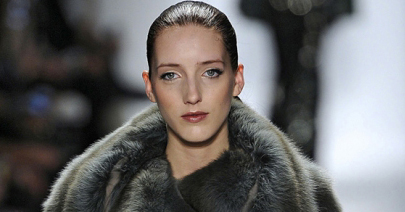By Tarice L.S. Gray
For 30 years, Dennis Basso has built an empire based on a marriage of luxury goods and innovative design. His foray into fashion was preceded by years of hard work and a long-standing dream of making it in the high-fashion world.
Early on, Basso began selling a line of pelts for Hy Fishman Furs. The luxury that surrounded Basso was intoxicating, so he started a side venture. He channeled his enthusiasm and optimism into a niche – fur coats. He formed his own company and showed his first collection to rave reviews.
“When I entered the fur business in 1983, I approached it as a designer, not necessarily as a furrier. So, my vision for creating my collections has been based purely on design – not the fur,” Basso says. “I think creating fur-fashion that is stepping outside the box has made the Dennis Basso brand different from the very beginning.”
That approach fueled his popularity. Within the first 10 years as a designer of fur-fashion, Basso was already a legend in the making. It was around that time that Keith Kaplan met the icon. Kaplan, now executive director of the Fur Information Council of America, says Basso began the push to move fur-fashion to the forefront.
“He was king of the industry by then,” Kaplan recalls. “His talent, that booming voice, it was inspiring. He definitely had this wow factor.”
Basso incorporated that wow factor, driven by a gregarious, larger-than-life personality, into his line of couture furs. From a long Russian sable to an elegant chinchilla swing coat, Basso created outer garments that lured such celebrities as Larchmont’s own Joan Rivers, Patti LaBelle and Joan Collins.
“Dennis was a pioneer in really focusing on the highest of the luxury spectrum,” Kaplan says. “He’s an innovator. …there has been a great deal of people coming into the (fur) industry because he enabled designers to be more experimental.”
Among his innovations, Kaplan says, was to move fur from the more rigid category of outerwear. His technique of darting, sewing folds into a garment to create a multidimensional shape, as well as dyeing fur to create a signature color to accent each collection, broke traditions in the industry.
Basso, owner of a Miniature Schnauzer, also stared down animal rights’ activists and other critics of his use of fur. Other designers took notice and the industry expanded.
According to FICA, there were between 40 and 50 prime fur designers in the mid-1990s. Today there are roughly 500 who include fur in their collections.
“They looked at Dennis Basso and they were inspired by him,” Kaplan says.
Though built on luxury furs, the Basso brand branched out in 2006-07, when he decided to do a ready-to-wear collection.
“I decided to expand into ready-to-wear when I realized that for each fur collection, I was designing ‘underpinnings’ to go with the furs,” he says. “My clientele became just as interested in what was under the fur as in the fur itself. So the birth of my ready-to-wear began.”
He went on to design princess-style silhouette gowns and cutting edge couture separates. His full collection of ready-to-wear made its debut in 2008 at Mercedes-Benz Fashion Week. Breathtaking wedding gowns have become another Basso signature. Kaplan attributes the success of Basso’s transition into the world of ready-to-wear and weddings to the designer’s knack of applying real detail to garments.
“He could put 1,000 darts in a fur coat, which is a lot, and if you apply that to be ready-to-wear, it takes the piece to another level,” Kaplan says.
That effort transforms fabrics – Basso uses only the finest materials – into coveted ready-to-wear creations and memorable gowns.
Still, he has not abandoned fur. Last year’s fur line featured dyed chinchilla in the collection’s signature color of cinnamon. This year it’s blue indigo. His showing at Mercedes-Benz Fashion week was a mix of color-rich sables, fine leather jackets cinched at the waist and dresses in a taffeta plaid and hand-embroidered pearl tweed and tulle.
Basso continues to maintain his place in fur design even with his emergence in ready-to-wear.
He is the reason, Kaplan says, that there are even more points of distribution. And in turn, the $14 billion fur retail industry has allowed designers like Basso to expand. His most heralded store in Manhattan is only one of several locations that include Harrods in London and stores in Aspen and Moscow.
Basso has also enlisted the talents of such models as Naomi Campbell and Coco Rocha, one of the freshest faces in fashion, for his brand.
“We’re very fortunate to have Dennis as an industry leader,” Kaplan says. “I’ve been fortunate to say I know him and work with him.”
And, he adds, there are benefits to the industries of fashion and fur in claiming Basso as an influential figure.
“It’s about the brand,” Kaplan says. “He operates with 100 percent integrity in his branding. That’s the biggest secret of his success.”

